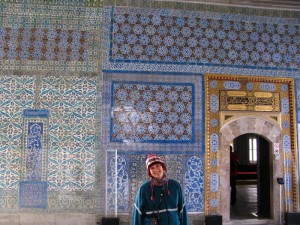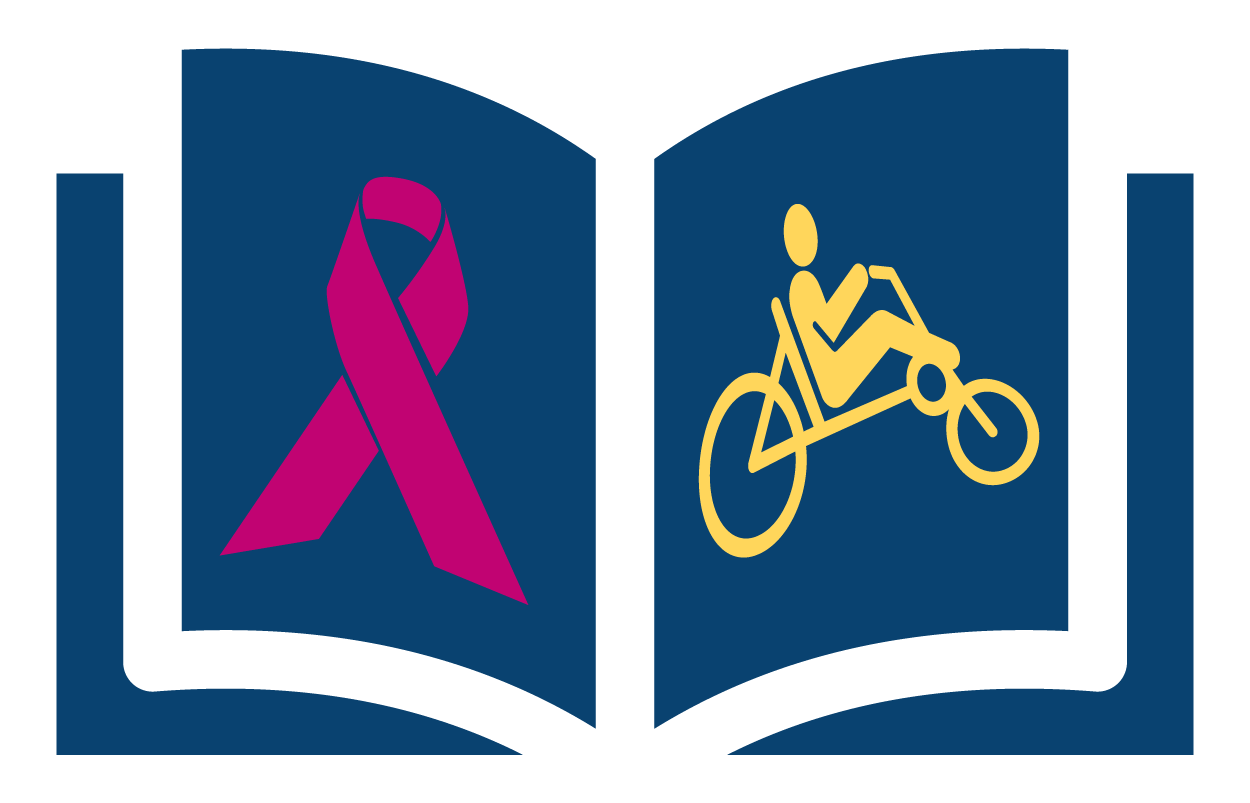Our day started with a visit to the Topkapi Palace. Becky was not too keen on the price (20 Lira + 15 Lira Harem tour + 10 Lira Audio Guide = 90 YTL), but we used the regret test. Is this something we would regret not doing? Our first answer was yes, and in the end we were very glad we went. For us, the palace had several must-see attractions. The palace was in use until 1924, so many parts are more modern than other places we have visited.

We began our tour with the Harem in an attempt to avoid any crowds. The Harem is the part of the palace where the Sultan, his family, and concubines, lived. The Harem had many incredible domed ceilings with amazing tile work that the pictures do not show well. When the sun shone just right, the gold in the designs shone.
Other than many groups of school children, the palace grounds were quite empty. We even had a few rooms in the Harem to ourselves – quite the contrast with what the guidebook told us to expect. A definite benefit to visiting on a cold day in late November!
We were very glad we had rented the audio guides (20 YTL for two). Scott felt a bit silly walking around with headphones on, but we found the explanations added a lot to our understanding, and the occasional music provided extra ambience.

After viewing the harem and walking around a bit, Becky was in need of a rest and we were both a little hungry. We did not really expect there to be so much to see, so we had not planned on being in the palace over lunch. Our visit to the palace kitchens and the explanation of the meals cooked for 10000 or 15000 people whetted our appetites even more.
We headed to the cafeteria to find a cup of tea and a snack. We were shocked by the prices (14 Lira for a donair which is usually 2-4 Lira on the street, and 4 Lira for tea which is usually 50 cents). Added to the horrible prices, the food was also pretty bad. We recommend that anyone planning a trip to the Topkapi Palace to bring along a picnic.

Our guidebook says that the treasury is an additional fee, but when we approached it was free. We were glad to be seeing the treasury with so few other people, as it is the habit here for people to stand as close as possible to the glass windows to view the items. This means that only one or two people can view them at a time. If you step back to allow more people to see them, someone inevitably just steps in front of you, blocking your view. Becky tried to be a polite Canadian, but found this to be rather frustrating! Scott quickly gave up and crowded up to the glass with everyone else.
Our vote for the most amazing thing we saw in the treasury were candle sticks made to sit outside the tomb of Mohammed. These did spent some time in Medina (Saudi Arabia) but were transported back to Turkey for protection during the first world war. They are about five feet tall and one foot in diameter and made of solid gold. If these items were in the Smithsonian in Washington DC, you would see armed guards very near. The security here seemed to be rather subdued given the value of the items on display.
Our second to last stop was the Sultan’s Palace containing holy relics of the Islamic faith. These include the turban of the prophet Joseph (Old Testament, Joseph and the coat of many colours – made famous in pop culture in Joseph and the Amazing Technicolor Dreamcoat), the staff that Moses used to part the Red Sea, various vials of Prophet Mohammed’s hair, and an imprint of Mohammed’s foot. Adding to the ambiance of the holy relics, the Koran was being read and piped through this section of the museum. When read aloud in Arabic, the Koran sounds very poetic. We aren’t quite sure what to think of many of the relics – many seem to Scott like all the fragments of the “True Cross” which are found in Christian churches around the world. Prophet Mohammed’s relics seem most likely to be authentic, since Islam was a well-established religion by the time he died. Then again – what is real and authentic in this context? It was surprising to us to find all of these here, but Turkey is the successor to the Ottoman Empire, which was for many years the center of Islamic faith in the world. Perhaps it shouldn’t have surprised us.

Our final stop was the Summer Pavillion, built in 1640 by Sultan Ibrahim and used for circumcision ceremonies for the crown princes. Becky took great delight in calling it the Circumcision Room, and watching Scott cross his legs. The whole area is decorated with beautiful tile works and we took lots of photos.

Leave a Reply